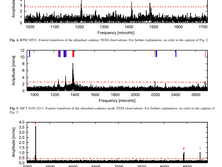As the environmental pollution and energy crisis become increasingly severe, hydrogen, owing to its tiptop energy density, renewability, high purity and zero-polluting combustion byproduct (water), has received greater attention as an ideal energy carrier to reduce the dependence on traditional fossil energy [1-3]. Over various hydrogen generation pathways (in Fig. 1), water splitting via electrochemical approaches has been regarded as a low-cost, eco-friendly and sustainable industrial pathway for high-efficiency hydrogen conversion and storage[4,5]. So far, numerous experimental studies about high-speed and efficient hydrogen evolution have been gradually categorized into two classes: 1) identifying HER mechanisms in pursuit of more strategies for accelerating HER reaction rates, especially at a wide range of pH containing neutral and alkaline electrolyte environments (theoretically) [6-12]; 2) the discovery and design of new kinds of durable and high-activity HER electrocatalysts (experimentally) [13-18]. Considering the class 1), the key to understanding the HER mechanism is to explore the inherent relationship between the microscopic viewpoint of intermediate adsorbed states (including intermediate species and the triggered activation and adsorption energy change) and the macroscopic reaction rates [19]. Although the perplexing principle of the HER process in different pH conditions (mainly referring to acidic, neutral and alkaline conditions) is still under heated debate, especially considering which factor plays a predominant role including the source of proton donors[6,7], the interfacial H*-M (hydrogen-metal) band intensity with the changed activation barriers[8,9], the availability of surface sites and electron trapping states[10], Hupd[11], pzfc (the potential of zero free charge) with the changed reorganizational energy[12], there is a common consensus based on the competing relationship between the extra water dissociation and activation step and the hydrogen adsorption/desorption step. Specifically, from the perspective of catalyst design, several feasible strategies should be implemented to accomplish two goals (as Fig.2 depicts[20]): improving the reaction thermodynamics by lessening the activation barrier from dissociated water molecules (e.g. creating more oxophilic sites); promoting the reaction kinetics by tuning the H*-M interactions (e.g. modulating the electronic structures)[20,21]. Accordingly, no matter what the respective value of two goals are in HER, more micro-to-macro relationship can be established between the HER-related principles and the apparent HER activity by taking theoretically well-defined surface structures and electronic band levels of a certain electrocatalyst into account. Another class of research entails the real-world design of a certain kind of high-activity electrocatalysts. Although noble metals with their compounds, especially platinum (Pt), exhibit the optimum HER activity according to the Sabatier principles[22], their rare reserves and exorbitant prices largely restricts the large-scale hydrogen production. With a comparably low overpotential, a low Tafel slope and a moderate ΔGH* (not too big or too small) to Pt, various materials have adequate potentialities to replace the Pt-based HER catalysts, including chalcogenides[13,14], oxides[15], phosphides[16], nitrides[17] and carbides[18] ranging from bulk to nanoscale. Fully considering important structural or physical properties like surface area, crystallinity, porosity, thickness, electron conductivity and layered assemblies, molybdenum dichalcogenides (MoX2) have superior activity and long-term durability to defeat other structured catalyst materials[23-26]. Accordingly, the suitable choice of MoX2 help govern and regulate the apparent reactivity and kinetics of HER by designing a practically high-performance electrocatalyst with controlled surfaces and morphologies from a theoretically well-defined catalyst surface based on the HER principles. Consequently, our work aims to provide a comprehensive structure-activity analysis of MoX2-based electrocatalysts to present a clear mapping between the sluggish-rate-related HER energetics of two intermediate thermodynamic states (produced by two competing steps: the extra water dissociation step and hydrogen adsorption with interfacial H*-M interactions, as shown in Fig. 3 (b)[27,28]) and the practical design of a high-activity electrocatalyst. Based on the aforementioned correlations among hydrogen generation and two classes of viewpoints (simplified in ........... Purchase to read more.


































